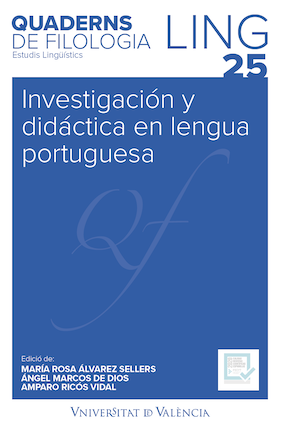Interfaces between didactics and linguistics: European and Brazilian Portuguese, foreign language teaching and multi-varietal passive competence
DOI:
https://doi.org/10.7203/qf.0.19079Keywords:
Varieties, Portuguese as a Foreign Language, Pluricentric Languages, Didactics, Multi-Varietal Competence. Abstract
Abstract
Brazilian (BP) and European Portuguese (EP) are prototypical examples of a pluricentric language, while the status of African vernacular Portuguese varieties is still controversial. The existence of different standard varieties is an enormous challenge for teaching Portuguese as a foreign language, since it is hard to decide which variety to teach. Scholars are divided as to whether a pluricentric approach or the focus on one variety only is the more fruitful way to learn a foreign language. Based on results from recent studies on BP, we first present main differences between EP and BP on different linguistic levels. In a further step, we propose some practical approaches for including linguistic variation in classes for Portuguese as heritage language, L2 or L3, without taking the risk of teaching an interlanguage based on the mixture of both varieties (e.g. use of clitics). This reflection and approach is crucial to provide speaking and writing proficiency to learners of Portuguese as a foreign language with genuine proficiency for different discourse traditions and communicative contexts.
 Downloads
Downloads
Downloads
Published
How to Cite
-
Abstract669
-
PDF (Español)439
Issue
Section
License
 Este obra está bajo una licencia de Creative Commons Reconocimiento-NoComercial-SinObraDerivada 4.0 Internacional.
Este obra está bajo una licencia de Creative Commons Reconocimiento-NoComercial-SinObraDerivada 4.0 Internacional.
Authors who publish with this journal agree to the following terms:
- Authors retain copyright and grant the journal right of first publication with the work simultaneously licensed under a Creative Commons Attribution License that allows others to share the work with an acknowledgement of the work's authorship and initial publication in this journal.
- Authors are able to enter into separate, additional contractual arrangements for the non-exclusive distribution of the journal's published version of the work (e.g., post it to an institutional repository or publish it in a book), with an acknowledgement of its initial publication in this journal.
- Authors are permitted and encouraged to post their work online (e.g., in institutional repositories or on their website) prior to and during the submission process, as it can lead to productive exchanges, as well as earlier and greater citation of published work (See The Effect of Open Access).



